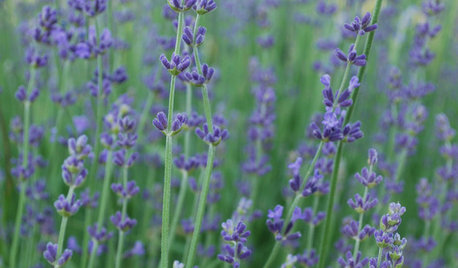Need help: producing a MULTI-grafted tree ['fruit cocktail tree']
njbiology
15 years ago
Related Stories

EDIBLE GARDENSHow to Grow 10 Favorite Fruit Trees at Home
Plant a mini orchard in fall, winter or early spring to enjoy fresh-off-the-tree fruit the following year
Full Story
FARM YOUR YARDIf You Have Room for Only One Fruit Tree ...
Juice up a small garden with one of these easier-care or worth-the-effort fruit trees for a mild climate
Full Story
EDIBLE GARDENSHow to Add an Apple Tree to Your Edible Garden
Readily available, beautiful and fragrant, apple trees offer four-season interest along with crisp, juicy fruit
Full Story
LANDSCAPE DESIGNPretty Trees for Patios, Paths and Other Tight Spots
Choose trees for their size, shape and rate of growth — or shape them to fit your space. Here's how to get started
Full Story
EDIBLE GARDENSHow to Grow Your Own Peaches and Nectarines
Make gardening a little sweeter with these juicy fruits, which you can eat after plucking or preserve for later
Full Story
EDIBLE GARDENSHow to Grow Your Own European and Asian Pears
Try these trees for their good looks, delicious fruit and wide range of sizes — plus you can espalier them
Full Story
GARDENING GUIDES5 Best-Behaved Trees to Grace a Patio
Big enough for shade but small enough for easy care, these amiable trees mind their manners in a modest outdoor space
Full Story
GARDENING GUIDESSpring Citrus Care Reaps Months of Sweet Rewards
Learn how to tend citrus trees in spring and ways to preserve their delicious fruit
Full Story
EDIBLE GARDENSHow to Grow Your Own Cocktail Garden
Conceivably, anything edible could find its way into a cocktail. Why not make the route rather short?
Full Story
SPRING GARDENINGTop 10 Scented Plants for Your Garden
A palette of perfumed plants can transform even the smallest of gardens into a sensory delight
Full StoryMore Discussions








turtleman49
Scott F Smith
Related Professionals
Allen Landscape Architects & Landscape Designers · West Milford Landscape Architects & Landscape Designers · Brentwood Landscape Architects & Landscape Designers · Forest City Landscape Architects & Landscape Designers · Wilmington Landscape Contractors · Battle Ground Landscape Contractors · Camp Verde Landscape Contractors · Desert Hot Springs Landscape Contractors · Downey Landscape Contractors · Dudley Landscape Contractors · New Brighton Landscape Contractors · North Highlands Landscape Contractors · Post Falls Landscape Contractors · Greenfield Landscape Contractors · Palos Heights Landscape Contractorslucky_p
njbiologyOriginal Author
Scott F Smith
njbiologyOriginal Author
Scott F Smith
njbiologyOriginal Author
Scott F Smith
milehighgirl
njbiologyOriginal Author
jellyman
njbiologyOriginal Author
Scott F Smith
njbiologyOriginal Author
Scott F Smith
njbiologyOriginal Author
Scott F Smith
njbiologyOriginal Author
Scott F Smith
njbiologyOriginal Author
oulala
Scott F Smith
njbiologyOriginal Author
milehighgirl